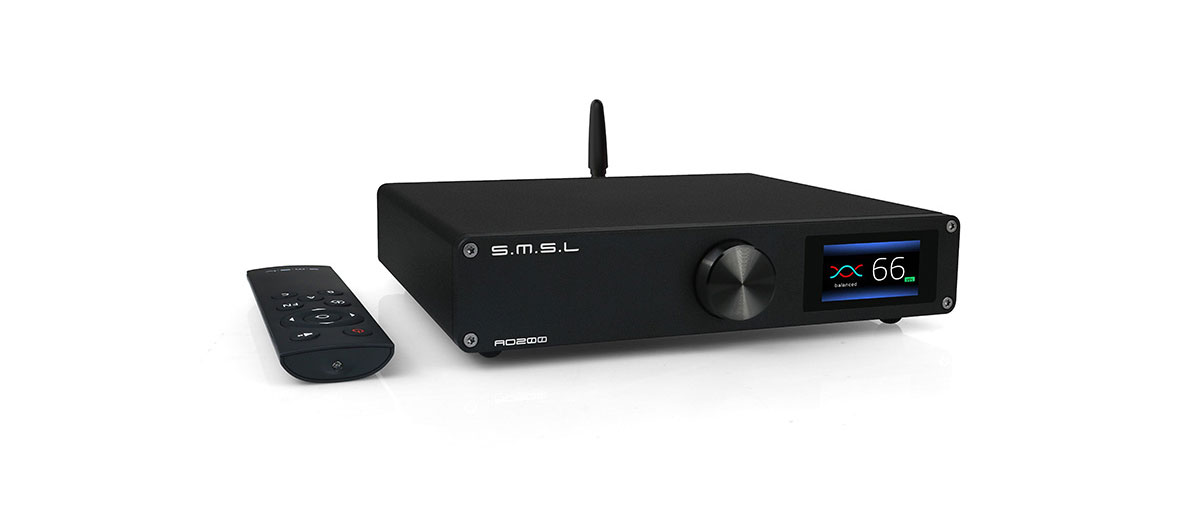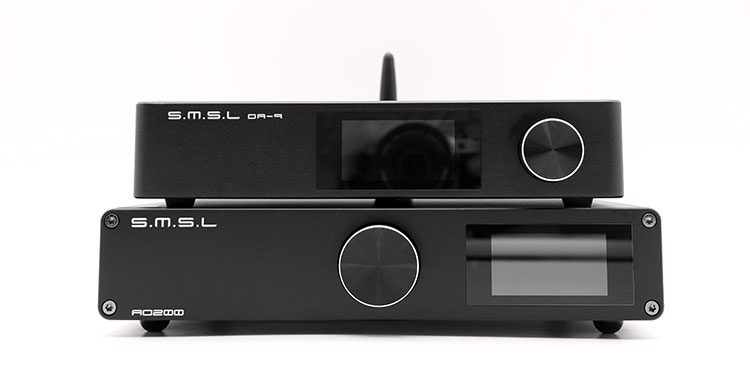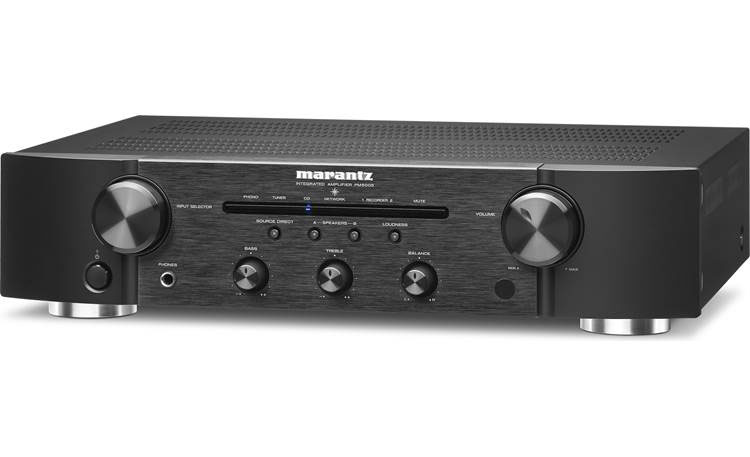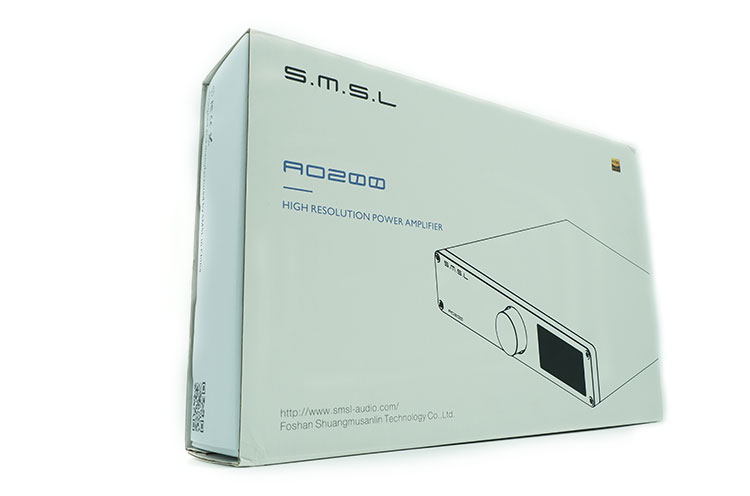Synergy
When I first tested the AO200, I had some preconceptions based on its close relative, the DA-9. So I hooked it up to the SU-9 via the balanced outputs, and then fed the output to my Wharfedale Diamond 11.1. I was pleasantly satisfied with this pairing, as the AO200 accentuated the more sluggish character of the 11.1.
It’s worthy to note that there is a difference between the balanced and single-ended inputs of the AO200. When I plugged the SU-9 through the single-ended inputs, there is a noticeable collapse of the layering within the soundstage, while there it tends to have better depth and separation via the balanced outputs.
I then tried moving the AO200 into my main system, where I have a Chord 2qute DAC, and I have a pair of ProAc Tablette 10 Signatures. While this pairing resulted in a punchy and clean presentation, the more agile presentation of the AO200 resulted in a drier presentation overall.
So I went back to the more synergistic pairing between the SU-9, the AO200, and a pair of Wharfedale Diamond 11.1’s.
USB/Bluetooth performance
My sound impressions mainly apply to the analog inputs. Going through the USB input from my PC, there is some graininess in the output of the amplifier. This also ends up collapsing the soundstage and imaging. While tonal balance is left intact, the agility and texture of the amplifier do not shine through as much. Using a flash drive yields a similar result.
Through Bluetooth, the tonal quality is preserved well, while most of the textures are retained. There is a step back in terms of soundstage layering and image delineation though, so images end up blurring together and collapsing into each other.
Select Comparisons
SMSL DA-9
Technical
Internally, both devices share a lot of components, including the Infineon MA12070 class D chips, and NJRC’s NJW1194 volume control IC. Both devices also accept balanced, and single-ended analog inputs and they also have a Bluetooth 5.0 connection using similar-looking Bluetooth aerials.
The only thing glaringly missing on the DA-9 is a USB input port, so the internal DAC chip on it is strictly used for Bluetooth.
The power numbers on both devices are identical, where both can feed 50W into 8Ω, almost doubling at 90W into 4Ω. These numbers are nothing to scoff at, especially considering the size of both these devices.
Design
At first, I imagined that both amplifiers would have the same footprint on my audio rack. However, I was surprised to see that the DA-9 is a smaller device. The rear is laid out similarly though, and they both share the same binding post layout, which is on the cramped side of things.
Aesthetically, it’s obvious that both devices come from the same stable, where they have a similar design language and some similar components. They share the same screen and the volume knob, which is smaller on the DA-9, looks almost identical save for the size.
The layout of the front fascia is just different, where the DA-9 has the screen in the middle, and the volume knob on the side, while the AO200 has the volume knob in the middle, and the screen on the side. The bottom of the DA-9 has 3 feet, which makes it a bit less stable if larger cables are hanging out the back of the device.
Interface and EQ
The interface of both devices is practically the same, except for the fact that the DA-9 doesn’t have an option for USB input. Aside from that, both devices have the same menu layout, and both have options for input, EQ and tone controls, brightness controls, soft clipping, and versions. So interacting with both devices is just the same experience.
Power
With both devices being so similar, it comes as no surprise that they both pair beautifully with my Wharfedale Diamond 11.1 while being fed upstream with SMSL’s SU-9 DAC. So for my comparison, this is the setup that serves as the basis of my impressions.
When I plugged both amps in, I was expecting them to output the same audible volume level for any on-screen volume level. Surprisingly, there is a difference between the volume settings of the 2 devices. It turns out that the DA-9 needs around 3-4 more notches to reach the same volume level.
Of course, I wasn’t able to max out the volume of either device without the risk of getting my speakers shot or getting shot by my neighbors, but I figure that they will top out at around the same volume if pushed.
On the specs sheet, it shows that both devices employ pretty much the same technologies inside, however the AO200 ended up being a slightly larger device. I’m guessing that the AO200 probably has a beefier power supply that necessitated a larger chassis while adding some weight to the device.
Sound Impressions
Sonically the biggest difference between the 2 devices is that the AO200 has more body behind the bass notes. So the DA-9 ends up being comparatively a bit less punchy, particularly with kick drums. Bass notes also end up being less controlled with the DA-9.
With both amplifiers being class-D, and their main pitfall is that there is a slightly colder vocal presentation. However, the DA-9 is comparatively even more analytical.
The instrument timbre is fuller and more authoritative on the AO200. Treble frequencies on the other hand take on a thinner, but more forward character. So instruments end up being brighter but thinner overall.
Soundstage width is about equal, however, and the directionality or images is about equal. Where the AO200 pulls a hair ahead though is with the layering and separation of images within the soundstage. Images simply sound more overlapped with the DA-9.
Dynamic range is a touch more compressed with the DA-9, where the crescendos don’t sound as engaging, and the gentler tinkling of piano keys sounds a bit louder and less defined.
Marantz PM5005
Design
The most obvious difference between the 2 amplifiers is that the PM5005 is a much larger device. It’s housed in a full-sized 17” chassis, thus it takes up much more space on my audio rack. It also has a few extra input options and even an onboard phono stage.
There is also a 2nd set of speaker outputs, that can either be used for a 2nd pair of speakers in another room or used as a bi-wiring option. So it just shows that the PM5005 has some extra options for analog devices.
However, it’s missing some of the modern comforts available with SMSL’s offering. These include Bluetooth, and USB input. Also, the PM5005 is strictly a single-ended affair, so you won’t find balanced inputs on this amplifier.
In front of the chassis, the PM5005 uses a rotary input selector and a volume knob on either side. Also, there is a dedicated loudness button with similar functionality to SMSL’s SDB EQ mode. In addition to that, the PM5005 also has a direct mode, tone, and balance controls.
Also glaringly absent on the PM5005 are subwoofer outputs, so adding a subwoofer to your system would end up being more complicated.
Technical
The technologies implemented inside the 2 amplifiers are also different. With the PM5005 implementing a Class AB amplifier utilizing Marantz’s HDAM modules, instead of class D.
There is also a marked reduction in rated power numbers with the PM5005, topping out at 40W per channel at 8Ω, and 55W into 4Ω.
Both amplifiers have similar output numbers at 8Ω, but going into 4Ω, the AO200 has an obvious advantage, with the ability to push out 100W. So impedance dips on speakers will be handled more easily by the AO200.
Performance
Comparatively, the PM5005 has a sweeter and more harmonically rich midrange, while having a slightly more liquid approach to the bass region.
There is a hint of roll-off in the sub-bass region with the PM5005, however going into the mid-bass, there is a more colored mid-bass region. While the PM5005’s bass tends to have more weight behind each drum hit, there is a sense that the attack is not as snappy, which results in a less resolving bass region overall.
The midrange is where the PM5005 infuses more sweetness and harmonic richness to vocal performance and a more euphonic overall character. Acoustic instruments also have a more full-bodied presentation.
Treble on the other hand has a grainier and less crystalline presentation, but there is more air with the PM5005.
Soundstage width is about equal on both amplifiers, but the images are formed differently on both. The PM5005 tends to have a slightly less-chiseled imaging presentation while keeping a good sense of directionality.
However, what makes the PM5005 special is its ability to present a more layered soundstage, where images are formed deeper into the soundstage giving a more stage-like overall presentation.
With the more immediate power delivery, the AO200 has a wider dynamic range between the 2 amplifiers. Where orchestral recordings tend to have a more single-volume approach with the PM5005. But neither is the last word in dynamic range.
Our Verdict
My first thoughts on the AO200 were that it’s just a rehash of SMSL’s already released DA-9 mini integrated amplifier. With the slightly larger chassis though, SMSL made good use of the space and probably added a better power delivery system to the AO200 giving it a more dynamic and lively presentation.
Despite the relatively small chassis of the AO200, it packs features that most amplifiers 2x its size don’t even have. What’s impressive though, is how SMSL was able to cram all these features while creating a relatively neutral but lively and dynamic class D amplifier that can produce loads of detail.
SMSL A0200 Specifications
- Inputs: RCA. BT, USB
- THD+N: 003%
- SNR: 110dB
- Channel separation: 98dB
- Input Sensitivity/Input Impedance: 250mV/47k0
- Output Power: 150Wx2(2Ω) / 90Wx2(4Ω)/50Wx2(8Ω)
- Power Consumption: 40w( Normal Volume)
- Standby Power: 5W
- Dimensions: 170X210X40mm(WxHxD)
- Weight: 4 kg
- Weight(With Package): 6 kg









